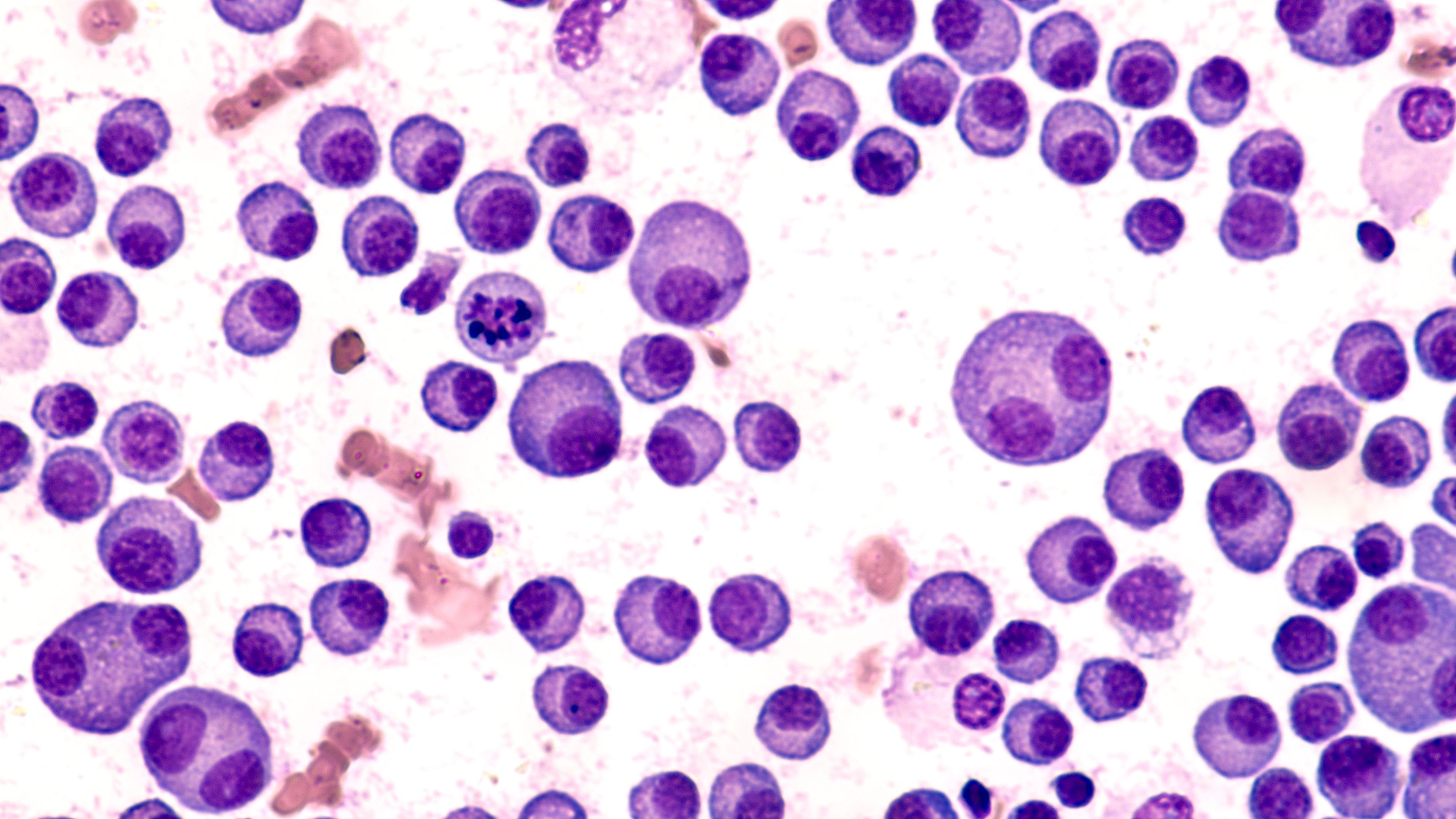Improving MALDI-TOF-MS for Monoclonal Gammopathy Patient Screening
Because the biophysical and biochemical parameters of peripheral blood plasma are often greatly altered in monoclonal gammopathy, conventional mass spectrometry measurements can be limited.
A dozen researchers with varying affiliations across Brno, Czech Republic, have collaborated on a new study that proposes a two-step extraction protocol for peripheral blood plasma samples from monoclonal gammopathy patients, followed by analysis using matrix-assisted laser desorption–ionization combined with mass spectrometry with time-of-flight detection (MALDI-TOF-MS), coupled with advanced statistics and machine learning (1).
Multiple Myeloma Awareness: Bone marrow aspirate cytology of multiple myeloma, a type of bone marrow cancer of malignant plasma cells, associated with bone pain, bone fractures and anemia. | Image Credit: © David A Litman - stock.adobe.com

The study, published in the Journal of the American Society for Mass Spectrometry, sought to unlock limitations in mass spectrometry measurements that are often present because of what the authors call “massive” alterations to biochemical and biophysical parameters of peripheral blood plasma in monoclonal gammopathy patients (1). Monoclonal gammopathies are defined by these researchers—who represent Masaryk University, St. Anne’s University Hospital, Masaryk Memorial Cancer Institute, and University Hospital, all in Brno—as a group of diseases exhibiting abnormal immunoglobulins in blood or urine. Multiple myeloma (MM) and plasma cell leukemia (PCL) are two well-known monoclonal gammopathies whose etiology, or manner of causation, is unclear, and which were earmarked for identification in this study.
Conditions of monoclonal gammopathies range from benign to malignant diseases, such as multiple myeloma, due to an overproduction of abnormal plasma cells.
For analysis, the two-step extraction process devised by the research team precipitated peripheral blood plasma samples using acetonitrile (ACN) as the organic solvent in the first step. Then in the second step, the samples were resuspended in ACN:H2O supplemented with trifluoroacetic acid (TFA) (1). MALDI-TOF-MS analysis of protein extracts distinguished MM patients from PCL patients, and further classification was achieved using multivariate statistical methods (principal component analysis [PCA], partial least squares–discriminant analysis [PLS-DA], and orthogonal PLS-DA [OPLS-DA]) and machine learning algorithms (decision tree [DT], random forest [RF], k-nearest neighbors [k-NN], artificial neural network [ANN], and PLS-DA). These additional measures helped to compensate for the fact that MALDI-TOF-MS can differentiate between healthy donors and monoclonal gammopathy patients but not, within the latter group, between MM and PCL.
As reported by the authors, the two-step extraction protocol demonstrated enhanced resolution and intensity (>50×) in the mass spectra obtained from the collected blood plasma extracts (1). Of the profiles taken by advanced statistics and machine learning, the direct identification, classification, and discrimination of MM and PCL patients were all made with high accuracy and precision, according to the study. The researchers said that a model based on PLS-DA, performed 10× with five-fold cross-validation (CV), resulted in the best performance: 71.5% accuracy (95% confidence interval [CI] where CI = 57.1%–83.3%).
In concluding their report, the researchers said the method they developed represents the first time that high-quality mass spectra were able to provide “unbiased” discrimination of two closely intertwined monoclonal gammopathies, namely multiple myeloma and plasma cell leukemia (1). The spectral fingerprinting afforded by MALDI-TOF-MS, preceded by a two-step extraction process and supported by multivariate statistics and machine learning algorithms, clearly delineated MM and PCL as separate entities, and more readily facilitated their characterization and manner of causation—all of which stands to have implications in future exploration into these diseases.
Reference
(1) Pečinka, L.; Vlachová, M.; Moráň, L.; et al. Improved Screening of Monoclonal Gammopathy Patients by MALDI-TOF Mass Spectrometry. J. Am. Soc. Mass Spectrom. 2023, 34 (12), 2646–2653. DOI: 10.1021/jasms.3c00166
In Conversation with the EAS Award Winner for Outstanding Achievements in Mass Spectrometry
November 27th 2024As part of our EAS 2024 coverage, we recently interviewed Benjamin Garcia of the Washington University in St. Louis about his work and his being awarded the EAS Award for Outstanding Achievements in Mass Spectrometry.